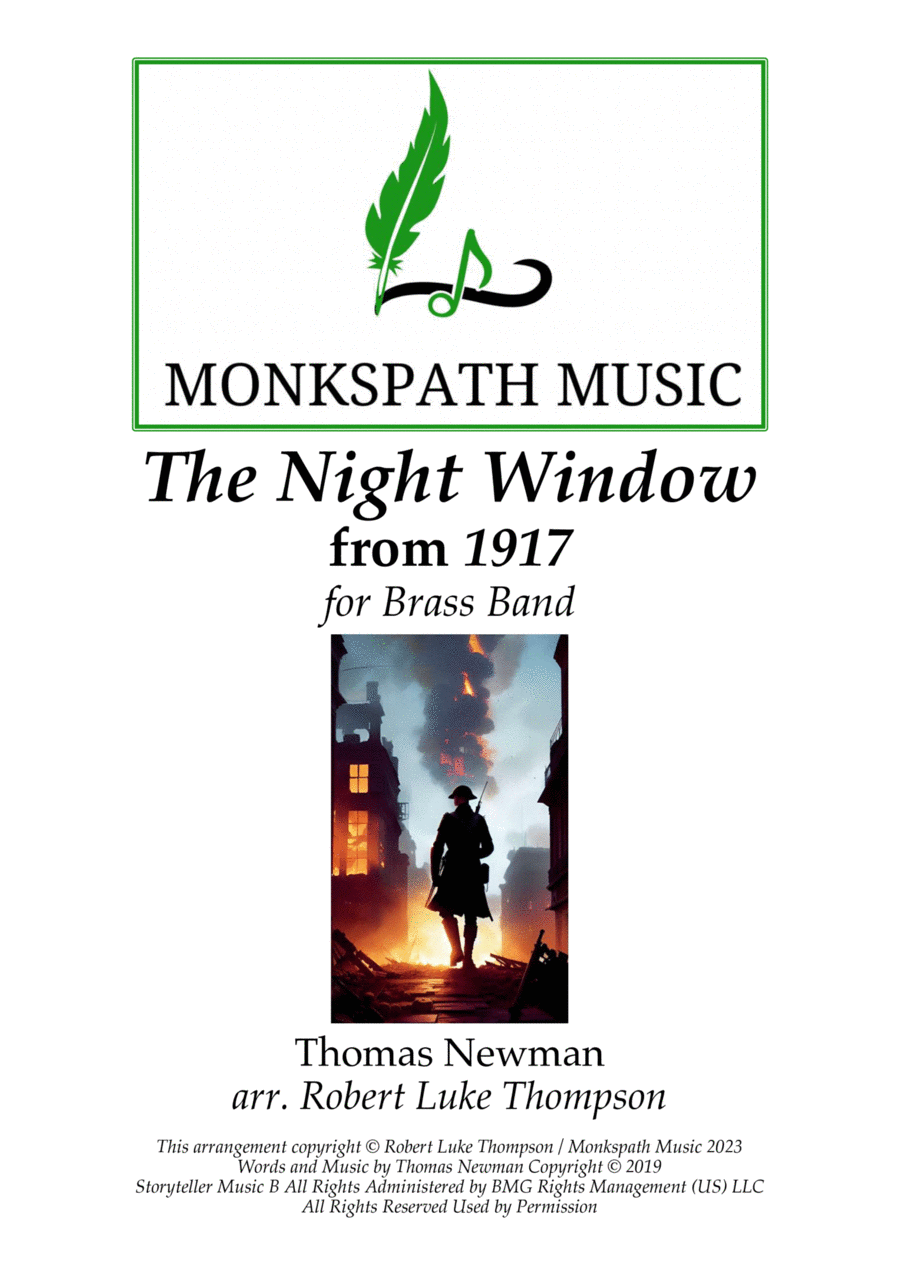Mixed Percussion B-Flat Tuba,B-Flat trombone,Baritone Horn TC/Euphonium,Bass Trombone,E-Flat Cornet,E-Flat Tenor Horn,E-Flat Tuba TC,Flugelhorn,Percussion 1,Percussion 2,Tenor Trombone - Level 3 - Digital Download SKU: A0.1210354 Composed by Thomas Newman. Arranged by Robert Luke Thompson. Classical,Contemporary,Film/TV. Brass Band. 33 pages. Monkspath Music #808128. Published by Monkspath Music (A0.1210354). The Night Window is a hauntingly beautiful instrumental piece that features in Sam Mendes’ World War I film, 1917. Composed by Thomas Newman, the score is a masterpiece of orchestration that captures the emotional intensity of war.This arrangment for Brass Band will work perfectly in any film music concert, or even a Remembrance related event. The Night Window is featured in a pivotal scene where the film's protagonist, Lance Corporal Schofield, takes refuge in an abandoned house during a tense night-time sequence. As Schofield takes a moment to rest and recover from his harrowing journey, he notices a window covered in beautiful stained glass that casts an ethereal glow over the room. The haunting melody of The Night Window begins to play as Schofield reflects on his experiences and contemplates the task ahead of him – saving the lives of sixteen-hundred men. As the title suggests, the music conveys the image of a night scene. The piece begins softly, with a gentle motif that evokes the stillness of the night. As the piece progresses, the music gradually builds in intensity and texture, whilst the camera slowly zooms in on the window, highlighting its beauty and fragility. The piece reaches its climax as Schofield gazes out of the window, and the camera pulls back to reveal the ruins of a once-beautiful town, now ravaged by war. The Night Window perfectly captures the sense of loss and devastation that war brings, while also conveying a glimmer of hope and beauty amid the darkness. A powerful piece of music that perfectly captures the emotions and themes of 1917. Its haunting beauty and evocative melodies make it a standout track in the film's score, and a piece that will linger in the listener's mind long after the credits have rolled.For further pieces, view the Monkspath Music catalogue and click here!
